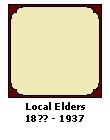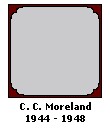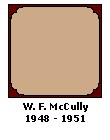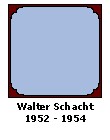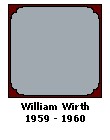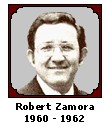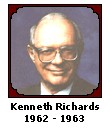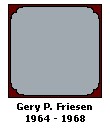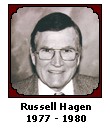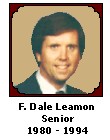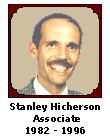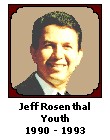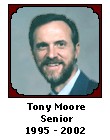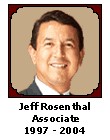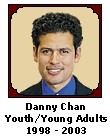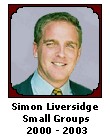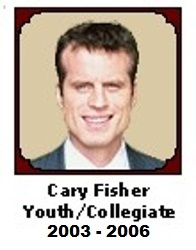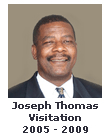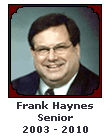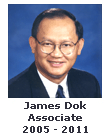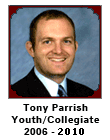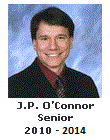|
The first Seventh-day Adventist came to California in 1859 by ox team from Battle Creek, Michigan and landed in San Fransisco. In 1868, two Adventist ministers were sent to California to hold meetings and get converts. They began their meetings in the northern part of the state, and it was not until 1877 that calls came from practically all sections of the state for ministerial aid. In 1874, the work was organized in Southern California and a minister put in charge of Los Angeles, San Bernardino, and San Diego Counties, and the first church south of the Tehachapi Pass was organized in 1880. Gospel Meetings in the Norwalk Area It was the summer of 1883. Sycamore, eucalyptus and willow trees dotted the flat land in and around Norwalk. Farming and dairy businesses were the main livelihood for the people back then. Farmers grew barley, oats, corn and grapes, and would haul their produce and dairy products to the railroad station in Norwalk, located on Front Street, about two blocks from the current church. Some of these farmers heard of the revivals going on in Downey and Artesia. Families rode on their horses and buggies to attend the spiritual meetings presented by Elder Eugene Atwood Briggs, a notable minister in the early work of the Seventh-day Adventist Church in Southern California. He and his assistants were from the California Conference. A fifty-foot tent covered the crowd that had assembled at the corner of Pioneer and Alondra streets. Elder Briggs, the twenty-nine year old blind evangelist, quoted scripture verses from memory. He carried with him a huge Bible written in Braille, and many people attended those meetings just to see those large volumes of the Bible. Several accepted the message at the Downey-Artesia meetings, and as a result a company of believers was organized in Norwalk. The California Conference received a report from Elder Briggs that a lot for a church building had been purchased, but records are not clear from where the property was acquired. It is reported that Anne M. Sproul, wife of Gilbert Sproul, the founder of the city of Norwalk, provided the property. Construction of the First Church Construction for the church was begun in the fall of 1883. There were fourteen charter members residing in Norwalk, Artesia, (Pico) Rivera, and Whittier (twelve women and two men) The charter members of the church were: From Norwalk--Mrs. Dilley, Mrs. Tabor, Miss McKusick, Mrs. Starr; From Artesia:--Mrs. E. R. Miller, Mrs. Amanda Robinson, Mrs. Kemp, Mrs. Rhoades; From Rivera:--Mr. and Mrs. Bert Passons, Mrs. Boyd, Mrs. McCray; From Whittier:--Mr. and Mrs. James King. The trustees appointed were: J. V. Dilley, J. G. B. Haynes, A. G. Taber, John A. Goolin, and E. A. Briggs. The building itself was largely financed by Bert Passons and James M. King, father of Mrs. Kate Van Deusen. A baptism was held for the new converts in a pool in New River, about one and one-half miles southeast of Downey. William H. King, son of Mr. and Mrs. James King recalled that during the winter of 1866-67, there were heavy rains that caused a flood and the river overflowed its banks in El Monte and made another course. The new river later became the San Gabriel River, and the old river the Rio Hondo. It was in the new river that William King was baptized by Evangelist Briggs at the age of 16. The new members of the church attended their first camp meeting in Los Angeles in 1884. It was held on the corner of 6th and Figueroa where the Statler Hotel now stands. The members lived in small family tents, and took their own kerosene stoves to do their cooking. Norwalk Church School Started "When the Norwalk church was first built, it was lighted by gas, generated at the side of the church by mixing carbide with water. A large wood heater in the center of the room supplied heat during the winter The church itself was a small, one-room rectangular structure without an entry hall. All Sabbath School classes were held in that one room; tiny tots, the primaries, the juniors, the youth, and adults all had their classes there." (Norwalk's Ninety Years, pp. 20, 21). A church school was started in 1901. In order to have space to accommodate classes, a room was added to the rear of the church. This room was used for children's classes during Sabbath School also. The Henry family, early members of the church, came to Downey in 1899. The four children went to the Norwalk Church School traveling 7 miles each way and were seldom late or absent. Their first teacher was Mrs. Strong, the second, Miss Ida Shirley, who served as a missionary in Guatemala in 1907. Ida Shirley later married Floyd Henry. Floyd's sister Myrtle went on to San Fernando Academy with the idea of becoming a missionary to Aftica. After 3 years at the Academy she married Rosier Campbell. They went on to serve in Africe as missionaries for 40 years. The Beginning of Health Ministry As one opened the door of the church there was seen a beautiful painting with a motto for the church and all who entered. The inspiring motto read, "Arise, Shine, For Thy Light Is Come." This particular saying inspired one of the early members of the church, Richard R. Breitigam, who later entered the ministry. Elder Breitigam recalls a series of meetings at the little church that was a blessing to all. The meetings conducted by a team from the Battle Creek Sanitarium were entitled, "Home Nursing and Cooking Class." Elder Breitigam's mother took the instructions to heart, and put them to practice in the home and community. There was only one doctor in the Norwalk area at that time and he had to spread himself over a large territory, stretching from Santa Fe Springs to well beyond Artesia. He called on Mrs. Breitigam to help him give treatments and deliver children. Visiting Pastors From time to time, often a long time between, they were visited by a minister from the California Conference, which took in the entire state until the Southern California Conference was organized in 1901. Among those who held a short series of meetings was John Loughborough who visited Norwalk in the late 1890's. He spoke on the "Great Signs and Wonders in the Heavens that Herald the Second Coming of Christ." Whenever it was possible the Conference sent a minister to help at the Annual Week of Prayer which was a special time of spiritual refreshing and revival. In 1910, Dr. LeRoy J. Otis moved to Artesia with his family. The Otis family moved to 636 Firestone Boulevard in 1912. Dr. Otis along with C. T. Halburg and Edward Ashby, served as successors to the original trustees for the church property. Dr. Otis served as a doctor in the community until 1946, when he retired and moved to Paradise, California. Church Growth in the Early 20th Century In 1913, Evangelists D. D. Fitch and P. L. Knox held a series of meetings in Norwalk. During these meetings Brother Halburg drove a hay wagon carrying people from Arteisa to the meetings. It was at this time that Brother Halburg and his wife became members of the Norwalk family. Due to a fire in the church clerk's home in the early 1920's, there are no church records previous to 1922. Around 1929 or 1930, the Mays family was won to our message from another church and made a welcome addition the small Norwalk congregation. Brother Mays was a builder and contractor, and with the funds raised he rebuilt the front porch of the church, adding a larger base with an awning over it. In 1935 the Fisher family of Artesia, who were also builders and contractors, became members of the Norwalk family. Mr. and Mrs. Edgar Fisher and seven children - four boys and three girls - all left another church, bringing with them the girlfriends and future wives of the young men. This added eleven new members to the church. Church Remodeling As the church continued to grow, it acquired a pastor in 1937 - Elder W. E. Guthrie, which it shared with the (Pico) Rivera Church. It was soon decided to enlarge the sanctuary. Pledges and money were given, the plans were made, and on December 7, 1941, the rear room was separated from the main chapel and moved farther back to make space for the wings which were inserted to enlarge the building. The foyer was also partitioned off at that time. Services were held in the Congregational Church while the church was jacked up so that the foundation could be poured in December 1941. Services were resumed in the rebuilt church on January 3, 1942. New handmade pews were built for the church by the Edgar Fisher family. In 1942, after the wings were added, the young people of the church decided to buy and donate a communion table. Plans for a New Church Building During Pastor Darrell Nicola's pastorship (1954-1956) the Sabbath School classes were limited by the lack of space, so additional space was rented from the Methodist Chruch down the street. A building fund was then started to collect the funds for building a new church. Property at the corner of Funston and Firestone, and then the property on the corner of Funston and Sproul was acquired. Church membership grew to 135. Pastor Nicola was followed by Pastors Albion Hoff (1957-1959) and William Wirth (1959-1960). In 1960 the membership had reached 151. Elder Zamora (1960-1962) worked hard toward the foundation of a new church facility. Ralph Clark, the architect, donated his time and materials to the first plans. Elder Friesen (1964-1968) solicited pledges to begin construction on the first phase of the worship facilities. The children of the church collected "Pennies for Pews," the next three years in order to pay for the new church pews. Membership by 1965 had reached 222. Finally on December 3, 1967 ground was broken and construction started for the new church. "The old church had its final service on Wednesday evening August 7, 1968. It brought an end to 85 years of continuous worship in the Southern California Conference's second oldest church." (Norwalk's Ninety Years, p. 58) On October 5, 1968 the first service was held in the new church. The membership at that time was 292. Elder Friesen gave his farewell sermon on September 28, 1968, and Pastor Ralph Sneed came about a month later. Membership in 1970 stood at 342. Early spring, 1977, the church was dedicated. Pastor Sneed left the same year and Pastor Russel Hagen took his place, serving for three years. In 1978, forty-eight Hispanic members left to form the Norwalk Spanish Church. Community Outreach Projects and City Mission Pastor Dale Leamon became the new pastor in January of 1980, transferring from the Tajunga Church. Membership was at 344. In 1982 Stan Hickerson became the associate pastor. In the early 1980's a group of church members studied and prayed for understanding of how to reach people in the surrounding community. A desire grew to incorporate health reform principles in the church programs, and a program for building a "city mission" developed. A corporation board (Norwalk Adventist, Inc.) was formed in January, 1982, to oversee the businesses that were emerging. Prior to this several ladies started baking wholesome loaves of bread in their homes to use when they visited. They sold them to friends, neighbors and church members as well. Since the response was good, they decided to lease and remodel a building on the corner of Funston and Front Streets to house "Our Daily Bread Bakery." It officially opened on January 14, 1982, featuring whole-grain breads and wholesome health foods. A larger complex, the City Mission Building, was built across the street from the church, opening on October 31, 1993. The bakery was then moved to this new building but was replaced by the "Simple Touch Veggie Cuisine" restaurant. In addition to the restaurant, the new facilities accommodate a greatly expanded health food store, a deli/restaurant and a Christian bookstore. The city mission building is used for evangelistic meetings, health seminars, and church events, including the weekly Sabbath fellowship dinner. Founding of the Health Programs and Day Care Center The next outreach program to get started was the Health Center, which got off the ground with the help of Drs. Clifford and Aileen Ludington. The site on the southeast corner of Firestone and Funston was leased, and it opened August of 1982. The main focus of the Health Center was lifestyle change, health education, smoking cessation, weight and stress management, plus a variety of other health related programs. Dr. Shirley Hon came on board in 1984 as a medical director, followed by Dr. Sidney Nixon. Glenna Eady, R.N. and health evangelist, held cooking classes and other related seminars. Bit O' Heaven Day Care opened in September 1982, with Janet Rich as director. It provides Christian care and education for preschoolers, as well as an outreach to parents and families. Bible study interests and a single parents' support group have developed from this ministry. The Mobile Health Unit (Blood Pressure Van Ministry) started to operate in 1983. It provided free blood pressure checks, health screenings, and health and spiritual literature to the public at large. Many Bible interests for Bible studies and health classes have originated from the van ministry conducted at local shopping centers. Membership by 1985 had risen to 538, and then to 752 in 1990. In January 1987, the corporation board voted to purchase the twenty-acre ranch in Aguanga, and named it The Golden Hills Health Retreat. In 1995 Tony Moore became the new pastor, and membership was at 902. Small-group home Bible fellowships were begun by associate pastor Simon Liversidge. Yearly missions trips to Mexico were lead by Youth pastor Danny Chan. A church Website was created in 2001. In September 2001 the church began a door-to-door literature distribution under the leadership of Helen Moore. To date more than 140 church members have visited over 10,000 homes. Pastor Moore joined the It Is Written team in January 2002, and the three associate pastors, Jeff Rosenthal, Danny Chan, and Simon Liversidge, guided the church for 18 months. Frank Haynes became the senior pastor in July, 2003. Membership was at 934. Cary Fisher joined the staff as the new Youth/Young Adult pastor in November 2003. Since then, Cary Fisher has moved on to pastor a different church. In 2009, James Dok became the administrative pastor, and Tony Parrish was the youth pastor. Pastor JP O'Connor became the senior pastor in 2010 but moved to Massachusetts to be with his relatives at the end of 2013. The Current Years Pastor Albert Frederico joined the church family in 2011 as Associate Pastor to 2016. Later joined by Pastor Vasco Saint Brown joined in 2014 as Associate Pastor to 2021. Shortly after, they were joined by Pastor John Strehle who came from Wisconsin as lead pastor in 2014 to 2021. Sources of information: |
Church Pastors 1883 - Present

